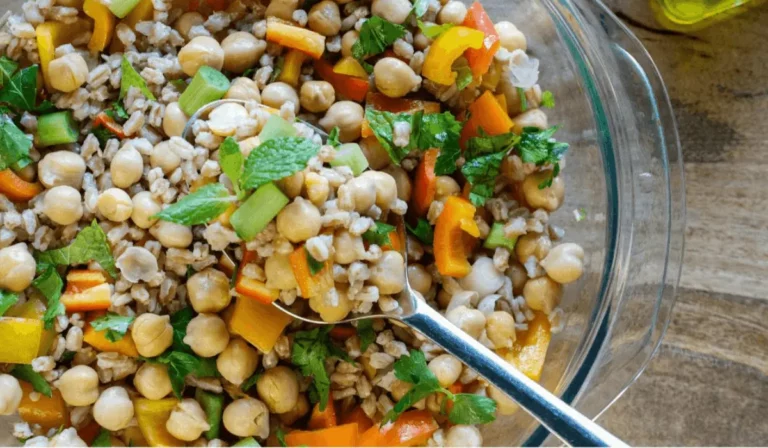Have you ever wondered why this iconic Kimchi Korean staple has become a global culinary star? Spicy, tangy, and packed with complex flavors, this fermented dish is more than just food — it represents culture, health, and tradition in every bite. Let’s dive into what makes it so special, from its ancient roots to its bold taste and worldwide appeal.
More Than Just a Side Dish
In Korea, this spicy fermented delicacy is much more than a meal accompaniment. It symbolizes family, community, and resilience. Every year, families and neighbors come together for kimjang — a traditional practice of preparing large batches to enjoy through the winter months. This meaningful custom even earned recognition from UNESCO as an Intangible Cultural Heritage.
Historically, preserving vegetables this way helped Korean families survive harsh winters. Today, it remains an essential part of Korean meals and a proud expression of culinary identity.
What Exactly Is It?
At its core, this dish is made by fermenting vegetables with a flavorful blend of seasonings. Napa cabbage and Korean radish are the most common bases, but more than 180 regional variations exist, each with its own twist.
The fermentation process transforms these simple ingredients, developing bold, addictive flavors — a perfect harmony of spicy, sour, salty, and savory notes. As it ages, the flavor deepens, creating a complex profile that keeps people coming back for more.
Key Ingredients That Create the Magic Kimchi
Each component in this dish plays a vital role in its flavor and nutritional value:
- Napa Cabbage or Korean Radish: Provide crunch and soak up the seasonings beautifully.
- Korean Chili Flakes (Gochugaru): Add heat, smokiness, and vibrant color.
- Garlic: Infuses bold, pungent depth.
- Ginger: Brings warmth and subtle spice.
- Scallions: Offer freshness and a mild onion-like flavor.
- Fish Sauce or Fermented Shrimp: Deliver deep umami richness.
- Salt: Essential for drawing out moisture and promoting fermentation.
Modern versions may include ingredients like pear, apple, or sugar to balance the spice with a hint of sweetness.
Regional and Global Variations Kimchi
From north to south, Korea boasts diverse versions of this fermented specialty. Southern styles often bring more spice and boldness, while northern varieties are milder, sometimes featuring watery brines.
Internationally, chefs have embraced this tangy dish, incorporating it into tacos, burgers, and even pasta. Its global popularity has sparked countless creative recipes, making it a must-try ingredient far beyond Korean cuisine.
The Taste: Bold, Tangy, and Addictive
The flavor evolves as it ferments. Fresh batches are crisp, lightly spicy, and pleasantly salty. As time passes, a deeper sourness develops, balanced by rich umami and a tangy bite that many find irresistible.
Common variations include:
- Baechu Style (Cabbage-Based): Classic, well-balanced with spice and tang.
- Kkakdugi (Radish Version): Crunchy, slightly sweet, and refreshing.
- Oi Sobagi (Cucumber-Based): Crisp, cool, and mildly spiced — ideal for beginners.
Whether you prefer it freshly made or aged for a deeper flavor, there’s a version to satisfy every palate.
How to Make It at Home Kimchi
Crafting your own batch is easier than you might think. Plus, it allows you to control the flavor, spice level, and ingredients.
Here’s a quick overview:
- Cut and salt the vegetables to draw out excess moisture.
- Prepare the seasoning paste with chili flakes, garlic, ginger, and other spices.
- Mix the paste with the wilted vegetables, ensuring even coating.
- Pack everything into airtight jars and leave to ferment at room temperature for a few days before refrigerating.
Health Benefits Worth Celebrating
Beyond its bold flavor, this fermented favorite delivers an impressive nutritional boost:
- Probiotics: Support gut health and digestion.
- Vitamins & Minerals: Packed with vitamins A, B, C, and K, plus iron and calcium.
- Antioxidants: Help combat inflammation and support immune health.
- Weight-Friendly: Low in calories, high in fiber — ideal for feeling full and satisfied.
- Skin Benefits: Some studies suggest its probiotics promote clearer, healthier skin.
With so many health perks, it’s no wonder this fermented vegetable dish earns superfood status.
Creative Ways to Cook with It
Traditionally served as a side with almost every Korean meal, this spicy condiment has also inspired global culinary creations:
- Fried Rice: A satisfying, spicy meal perfect for leftovers.
- Stews & Soups: Adds tangy depth and richness to hearty dishes.
- Pancakes: Crispy fritters with a savory kick.
- Fusion Dishes: Think tacos, burgers, and even grilled cheese with a bold twist.
Frequently Asked Questions Kimchi
1. How spicy is this Korean side dish?
The heat depends on the recipe. Traditional versions can be bold, but many milder options are available, especially for beginners or those who prefer a gentler kick.
2. Does it always go through fermentation?
Yes, authentic recipes require fermentation. However, freshly made, unfermented versions can also be enjoyed for their crisp, mildly seasoned taste.
3. What’s the best way to store it?
Keep it in an airtight container in the refrigerator. As it ages, the flavors intensify — a quality many enthusiasts love. Properly stored, it can last for several months.
4. Can I enjoy this fermented dish every day?
Absolutely. Many people incorporate it into their daily meals for its flavor and health benefits. Just monitor your sodium intake if consuming large portions regularly.
Conclusion: A Global Flavor Worth Exploring Kimchi
This iconic Korean staple brings bold flavor, valuable health benefits, and rich tradition to the table. Whether served as a side dish, used to spice up everyday meals, or enjoyed in creative global recipes, it offers an exciting way to nourish your body and connect with culinary history.
Ready to experience the bold, tangy magic of this beloved dish? Start with a spoonful — your taste buds (and your gut) will thank you.
More Relevant Recipes






